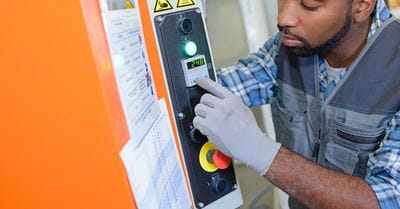Vertical Reciprocating Conveyors | Phoenix

Raymond West supplies warehouse automation equipment such as VRC's.
We are among the largest suppliers of warehouse automation equipment in the state.
Call us today at (602) 275-2228.
What Is a Vertical Reciprocating Conveyor (VRC)?
A vertical reciprocating conveyor is an efficient, relatively inexpensive, simple way to move goods from one level to another. VRCs have applications in a host of different industries, including manufacturing plants, storage facilities, distribution centers, and other multi-story operations. These adaptable pieces of equipment can be readily incorporated into a structure’s basement, mezzanine, balcony or any higher story levels.
VRC’s consist of a column, a carriage, and a hydraulic or mechanical system. Vertical material lifts can be installed almost anywhere on the interior or exterior of a structure. Barriers and enclosures encircling VRC shafts ensure employee safety and well being.
What Are Some Advantages of VRCs?
Safety: Many facilities are dependent upon forklifts for vertical movement of products. Although highly capable machines, forklifts are mainly designed for the horizontal movement of materials. To save time and effort, workers may sometimes extend their lift trucks beyond their height limit or transport goods beyond their equipment’s capacity rating. When such infractions occur, the probability of an accident multiply.
For some vertical product movement, VRCs provide a safe and efficient replacement for lift trucks. Specifically designed and built for each facility’s application needs, VRCs significantly reduce the chances of human error.
In addition, vertical material lifts are engineered to lift more substantial loads more frequently. These faster cycle rates result in reduced labor hours and lower costs. For companies that have significant vertical transport demands, vertical reciprocating conveyors can improve worker safety and lower costs.
Customization: One significant benefit to VRCs is the degree to which they can be tailored to specific applications. Because standard elevators are designed to safely move people, regulations have been put into place that limit the speed, capacity and size of these machines. While such safety measures are appropriate for safely transporting humans, they are prohibitive for high throughput movement of goods in production facilities, storage facilities and distribution operations. Vertical lifts can be readily customized because they are not bound by the same rules as passenger elevators.
Regulation: VRCs are designed to move materials only, while elevators are meant to move both people and materials. Because of this elemental difference, VRCs are spared from the strict elevator rules in many states.
In place of local jurisdiction, VRCs are regulated by their own national code that is under the authority of the American Society of Mechanical Engineers (ASME), one of the first standards shaping associations in the nation. More specifically, vertical reciprocating conveyors must comply with ASME’s Safety Standard for Conveyor and Related Equipment (ASME B20.1-2018). This standard defines the rules for the construction, assembly, operating procedure and maintenance of conveyor systems.
Raymond West Is A Full Service Supplier of Vertical Reciprocating Conveyors
If you’re starting the procurement process for a VRC, have questions or require engineering support, Raymond West can help. Our material handling professionals can help design, procure, set up and maintain a system that’s suitable for your business. Get in touch with us today!
Raymond West's Phoenix facility serves the entire Phoenix Metro area, including Phoenix, Tempe, Mesa, Gilbert, Chandler, Scottsdale, Glendale, Goodyear, Tolleson, Peoria and all surrounding areas.
Raymond West | Phoenix Material Handling Equipment Supplier
2659 E Magnolia St
Phoenix, AZ 85034
(602) 275-2228

